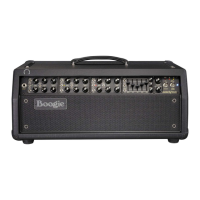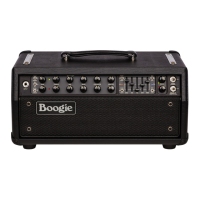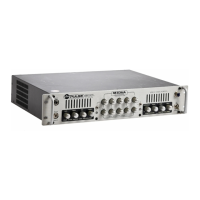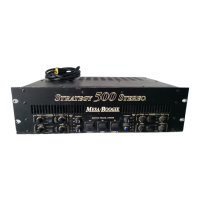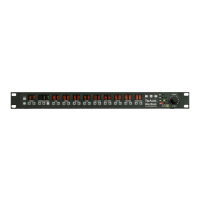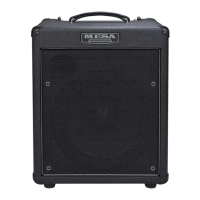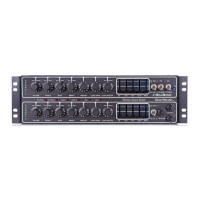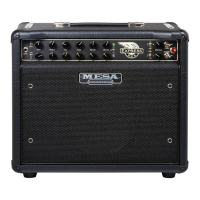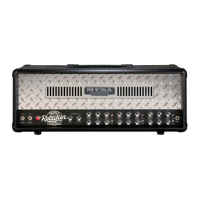PAGE 26
the Reverb is On and in the signal path. When the mini toggle is OFF (down/Green LED o), the Reverb is out
of the circuit.
With the Reverb on (switch up/Green LED illuminated), use the 3 REVERB mix controls on the left-hand side of
the Graphic EQ window to dial in the desired mix level of the Reverb eect in each of the 3 Channels. Channel
1 Reverb mix is at the top, Channel 2 mix is in the middle, and Channel 3’s is on the bottom.
When the switch is set to the lower 0/FS position, the Reverb is o, but it can be switched on and o via the
REVERB button on the MARK VII Footswitch. The adjacent REV ON LED will illuminate when the Reverb is
switched on and in the signal path for all 3 of the Channels. As you would imagine, if a Channel’s Reverb mix
control is set all the way down (7:00), no Reverb eect will be heard.
POWER
This is the AC Mains Power Switch. The ON position supplies the AC voltage present at the Wall Socket –
Domestic Rating = 117 Volts (120V). Make sure the amplifier’s power cable (supplied) is firmly seated in its IEC
socket on the amplifier’s Rear Panel and that it is connected to a grounded power source that accepts the
standard 3-prong plug.
NOTE: Never alter or modify your power cable! Do not use Ground Lift Adapters (3 to 2 adapters)! Doing so will void your
warranty and put you at risk of electric shock.
Always begin playing sessions with the following Cold Start Procedure at Power Up:
1. With the STANDBY in the OFF position, Flip POWER to ON
2. Wait at LEAST 30 Seconds
3. Flip STANDBY to ON …and Enjoy!
Following this Cold Start Procedure will help ensure reliability and prolong the toneful life of your tubes, espe-
cially the power tubes. Like an incandescent light bulb that has a filament, much wear and stress on your tubes
occurs at the instant of power up from a cold state. Much like a dimmer on a light switch being set low when
you first flip it on, the STANDBY being OFF at the instant of power up – and for at least 30 seconds afterward
- allows the tubes to warm up and minimizes the shock on tube filaments when they are cold.
STANDBY
As mentioned above in the POWER SECTION, the STANDBY provides a warm- up/idle state for the tubes in your
amplifier. It should ALWAYS be used at power up, even if the amp’s chassis is warm to the touch from recent use.
This is because tubes cool far more quickly than other components like the chassis, and even when they are
warm, it is far easier on them to have 30 seconds of warm-up/prep time before being hit with the high voltage.
The STANDBY also doubles as a mute feature for set-up before and breaks during a performance. Use the
STANDBY any time you are pausing from playing and want to keep your amplifier in a warm and ready state.
If you’re going to take a break for a couple of hours, it’s probably best to power down to save electricity, just
be sure to use the Cold Start Procedure (under the POWER instructions above) when you return and want to
power back up and use the amplifier again.
NOTE: A little preemptive troubleshooting instruction here that you may never need but is good to know anyway as a tube
amp owner/user:
Should you ever flip the STANDBY to ON and hear a loud hum, loud static, or should you smell something hot/
burning, quickly flip the STANDBY to OFF. What you could potentially be hearing (or smelling) may be a power
tube arcing or shorting. While this is rare, it can happen if a power tube were to become faulty. In the event it
ever does occur, flipping the amplifier to STANDBY stops the incident right away. On occasion, it will correct
the problem, but often it can reoccur. You can troubleshoot the problem using the method below:
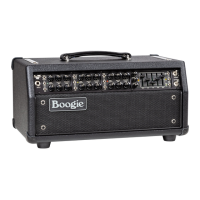
